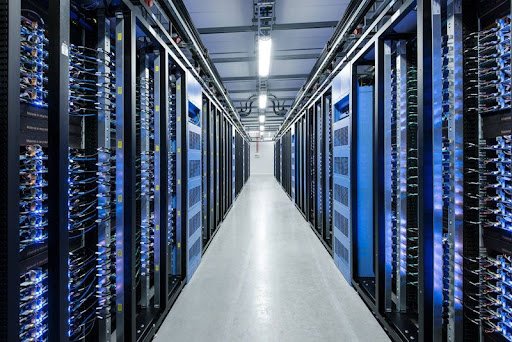AI and cryptocurrency mining lead to increased energy consumption of data centers
AI and cryptocurrency mining require large amounts of computing resources to function effectively. As a result, the data centers that provide this computing power consume enormous amounts of energy. Some estimates suggest that cryptocurrency mining could consume as much energy as entire countries.
This raises concerns about its impact on the environment and climate. Using large amounts of energy to mine cryptocurrencies can lead to increased emissions of greenhouse gases and other pollutants. In addition, this may increase the cost of electricity for ordinary users.
Possible solutions to reduce environmental impact could include more efficient mining algorithms, using renewable energy to power data centers, and developing more sustainable ways to produce cryptocurrencies. In any case, data center energy consumption related to AI and cryptocurrency mining must be carefully monitored and managed to minimize negative impacts.

A mining center is a large hangar filled with special equipment that performs many mathematical operations and generates digital coins. Such a center consumes a large amount of energy around the clock on an even schedule, so crypto farms are extremely sensitive to energy prices.
In one of the published articles by theverge
https://www.theverge.com/2024/1/24/24049047/data-center-ai-crypto-bitcoin-mining-electricity-report-iea
Data centers could consume twice as much electricity by 2026, thanks in large part to cryptocurrencies and artificial intelligence, according to a new report from the International Energy Agency (IEA).
We rely on data centers to store all our emails, photos, cat videos and everything else stored in the cloud. More and more data centers are popping up for Bitcoin mining and artificial intelligence training.
This has already sparked backlash over the environmental impact of cryptocurrencies and artificial intelligence tools such as ChatGPT, as all of these data centers are responsible for greenhouse gas emissions associated with electricity use. The world will need much more renewable energy to clean up pollution from the grid while meeting skyrocketing demand for electricity from data centers.
Data centers, cryptocurrencies and artificial intelligence accounted for about 2 percent of global electricity demand in 2022, using 460 TWh of electricity, according to the IEA's annual electricity report released today. It is estimated that cryptocurrency mining alone will account for almost a quarter of this electricity consumption, burning 110 TWh in 2022.
By 2026, electricity consumption in data centers, including those used for cryptocurrencies and artificial intelligence, could rise to 1,050 TWh depending on the pace of technology development. This growth is equivalent to an increase in electricity demand in one more country; Sweden in a more modest scenario or, at best, Germany.
Today, the United States has the most data centers, with 33 percent of the world's roughly 8,000 data centers. It is also the country with the most Bitcoin mining. The IEA forecasts a "rapid pace" of growth in U.S. data center electricity consumption over the next few years, from about 4 percent of U.S. demand in 2022 to 6 percent by 2026. Expansion of 5G networks and cloud services is a priority. other drivers of this growth.
Ireland, with one of the lowest corporation tax rates in the European Union, is expected to see a boom in new data centers. Its 82 data centers already accounted for 17 percent of the country's electricity consumption in 2022. Another 54 are either under construction or have recently received permission to begin construction. By 2026, all these data centers could supply nearly a third of the country's annual electricity needs.
“The rapid expansion of the data center sector and increased demand for electricity could pose challenges to the electricity system,” the IEA report said. The risk is not unique to Ireland. In London, the demand for electricity for data centers has made it difficult to build more housing. Texas, the center of Bitcoin mining in the US, is struggling with new crypto mines (also known as cryptocurrency data farms), adding strain to its already aging and overburdened power grid.
Because data centers are essentially warehouses for computers, 40 percent of their electricity demand comes from computers. Keeping all that equipment cool accounts for another 40 percent of demand, with IT equipment making up the rest.
Adding AI to the mix increases overall data center demand for electricity. In a fully AI-enabled scenario, Google Search could consume ten times more electricity, the IEA report says. Likewise, he predicts that the AI industry could consume ten times more electricity in 2026 than it did last year.
Electricity demand for cryptocurrencies is expected to grow by 40 percent by 2026. There have been several success stories in limiting the energy and environmental impacts of cryptocurrencies. The Ethereum blockchain was able to reduce energy consumption by more than 99 percent by switching to a much more energy-efficient method for validating blocks of new transactions. Despite this, the Bitcoin network has refused to follow suit and is responsible for most of the carbon emissions associated with cryptocurrency mining.
Fortunately, the IEA also predicts accelerated growth of renewable energy worldwide, overtaking coal in producing more than a third of the world's electricity by 2025. This still does not solve all the problems that new data centers pose. It's probably just as important to improve energy efficiency—say, by introducing highly efficient cooling systems—since too much growth in electricity demand could outpace the growth of renewables.